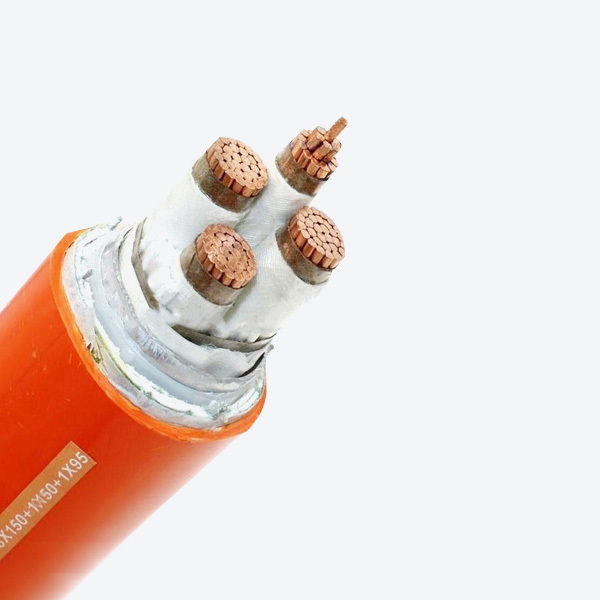Introduction
In the rapidly evolving world of technology and connectivity, the demand for high-performance shielded cable solutions has never been greater. These cables play a vital role in ensuring the reliable transmission of signals in various applications, ranging from telecommunications and data centers to industrial automation and medical devices. In this article, we will delve into the importance of shielded cables, their benefits, different types, and the key factors to consider when selecting the right solution for your specific needs.
Importance of Shielded Cables
Shielded cables are designed to protect signals from external electromagnetic interference (EMI) and radio frequency interference (RFI), which can degrade signal quality and disrupt communication. Rubber Sheathed Cable and RFI can be caused by various sources, including nearby electronic devices, power lines, and radio frequency transmissions. Without proper shielding, cables are susceptible to picking up these unwanted signals, leading to data corruption, signal loss, and system malfunctions.
By incorporating shielding into the cable design, manufacturers can effectively block out external interference and maintain signal integrity. This is particularly important in high-speed data transmission applications, where even minor signal disruptions can result in data errors and system failures. Shielded cables are commonly used in environments with high levels of electromagnetic noise, such as industrial settings, medical facilities, and telecommunications infrastructure.
Benefits of Shielded Cables
The use of shielded cables offers several key benefits that contribute to improved performance and reliability in various applications:
1. Enhanced Signal Quality: Shielded cables provide a high level of immunity to external interference, ensuring that signals are transmitted accurately and reliably over long distances. This is essential for maintaining the integrity of data and communication networks.
2. Noise Reduction: By blocking out unwanted electromagnetic and radio frequency interference, shielded cables help reduce noise and crosstalk, leading to clearer signal transmission and improved overall system performance.
3. Increased Bandwidth: Shielded cables are capable of supporting higher data transfer rates and bandwidths compared to unshielded cables, making them ideal for high-speed applications such as Gigabit Ethernet, HDMI, and USB 3.0.
4. Improved Reliability: The robust construction of shielded cables, with multiple layers of shielding and insulation, enhances their durability and resistance to environmental factors such as temperature fluctuations, moisture, and mechanical stress.
Types of Shielded Cables
There are several types of shielded cables available on the market, each designed for specific applications and performance requirements. Some of the most common types of shielded cables include:
1. Foil Shielded Cables: These cables feature a thin layer of aluminum or copper foil wrapped around the inner conductor(s) to provide protection against electromagnetic interference. Foil shielding is lightweight, flexible, and offers good coverage against high-frequency noise.
2. Braided Shielded Cables: Braided shielding consists of a mesh of fine copper or aluminum wires that are woven around the inner conductor(s). Braided shields offer higher flexibility and durability compared to foil shields, making them suitable for applications with repetitive bending or movement.
3. Combination Shielded Cables: Some shielded cables feature a combination of foil and braided shielding for enhanced protection against both high-frequency and low-frequency interference. These cables offer the benefits of both types of shielding and are commonly used in demanding industrial and military applications.
4. Overall Shielded Cables: In addition to shielding around individual conductors, some cables come with an overall shield that encases the entire cable assembly. This provides maximum protection against external interference and is ideal for applications that require comprehensive EMI/RFI shielding.
Factors to Consider When Selecting Shielded Cables
When choosing the right shielded cable solution for your specific application, it is important to consider the following key factors:
1. Environment: Evaluate the operating environment where the cable will be installed, including temperature range, exposure to moisture, chemicals, and mechanical stress. Select a cable with suitable shielding and insulation properties to withstand these conditions.
2. Frequency Range: Determine the frequency range of the signals being transmitted and choose a cable with shielding that offers optimal performance in that range. Higher frequencies require more effective shielding to prevent signal degradation.
3. Flexibility: Consider the flexibility requirements of the cable, especially if it will be installed in applications with frequent bending or movement. Braided shielding is more flexible than foil shielding and is preferred for applications that require high flexibility.

4. Signal Integrity: Ensure that the shielded cable provides sufficient signal integrity and minimal signal loss over long distances. Look for cables with low attenuation and impedance matching to maintain signal quality.
5. Compliance Standards: Check if the shielded cable meets relevant industry standards and certifications for EMI/RFI protection, flame resistance, and electrical safety. Compliance with these standards ensures the cable's reliability and performance in specific applications.
Conclusion
High-performance shielded cable solutions play a crucial role in ensuring the reliable transmission of signals in diverse applications that require protection against electromagnetic interference. By choosing the right type of shielded cable and considering key factors such as environment, frequency range, flexibility, and signal integrity, you can enhance the performance and reliability of your communication networks and data transmission systems. Investing in quality shielded cables not only safeguards your critical data but also improves the overall efficiency and longevity of your interconnected devices and equipment.
